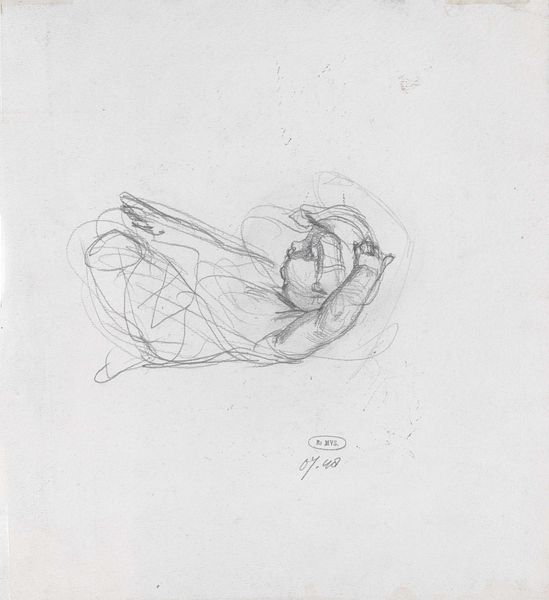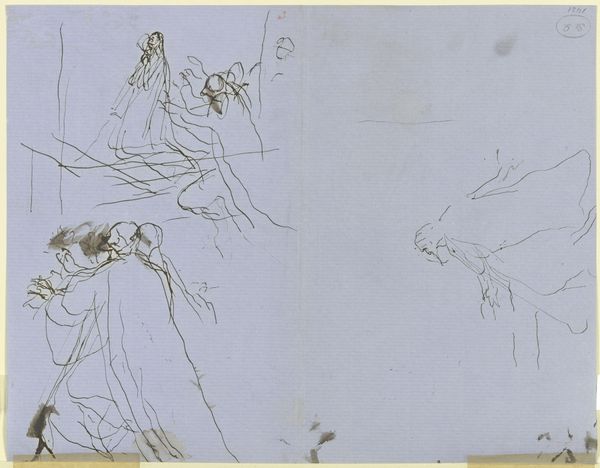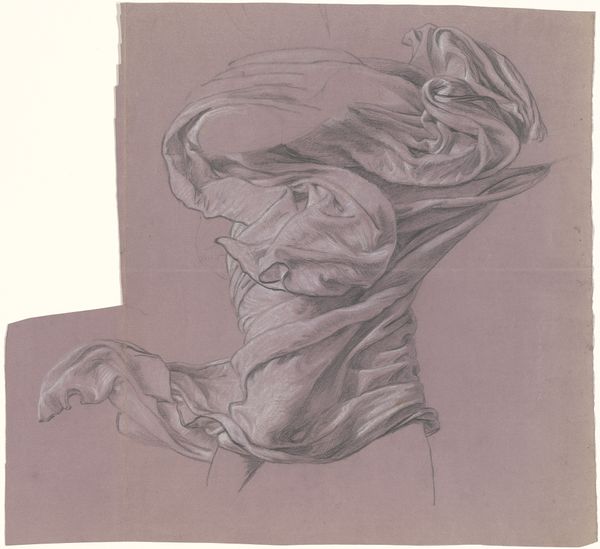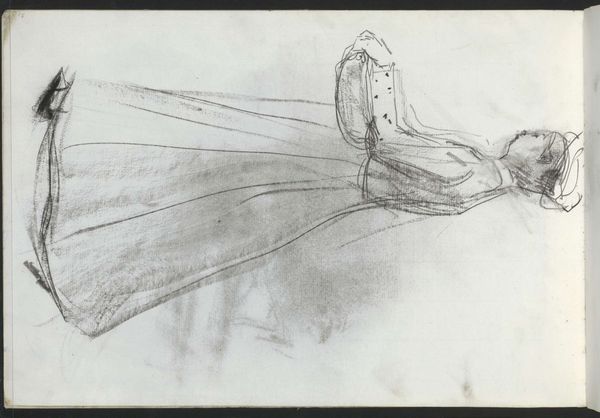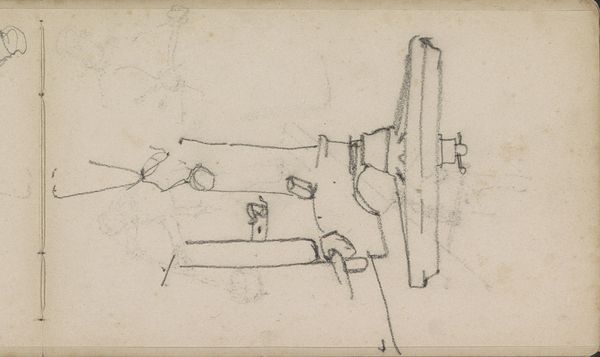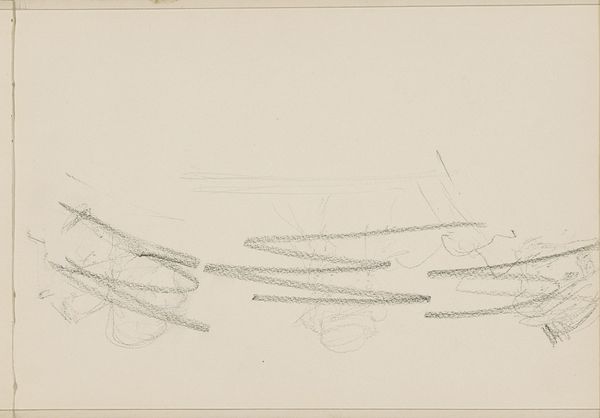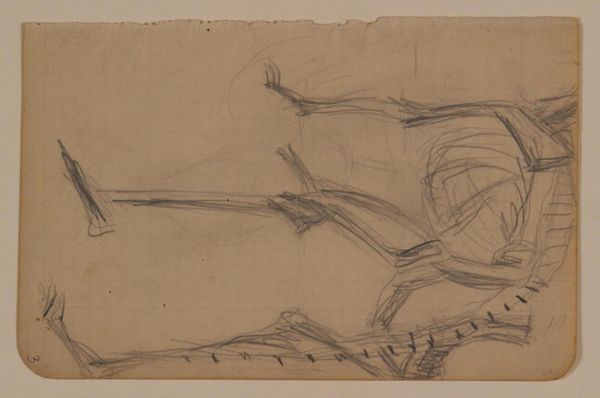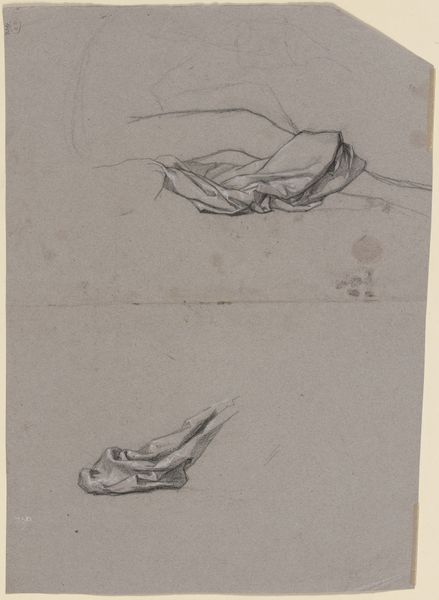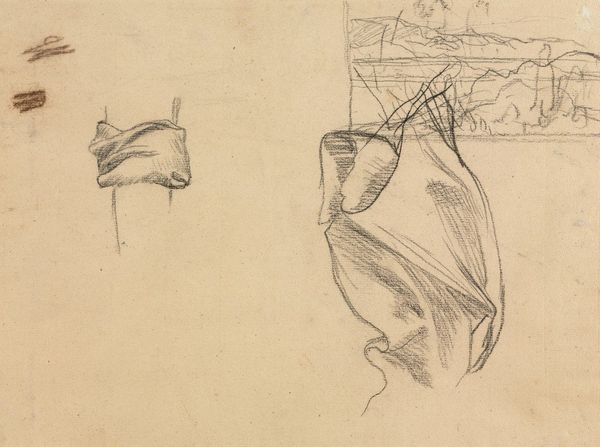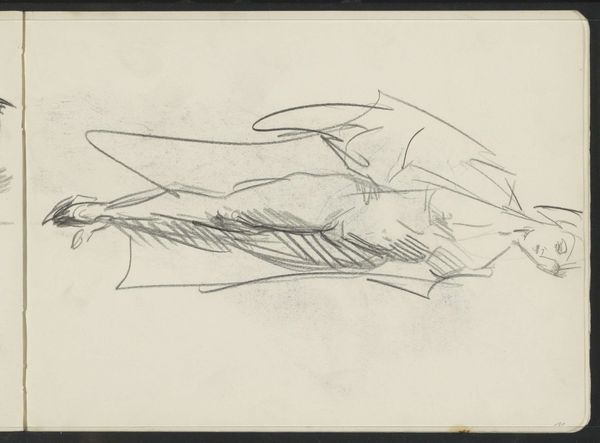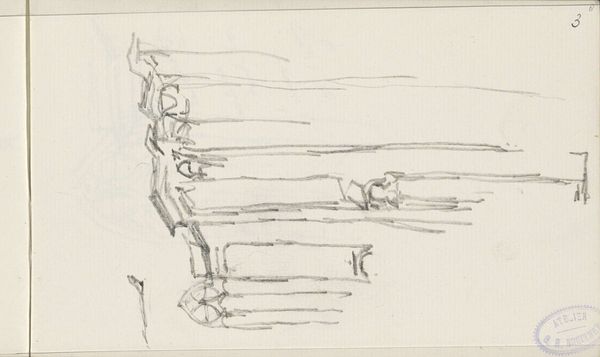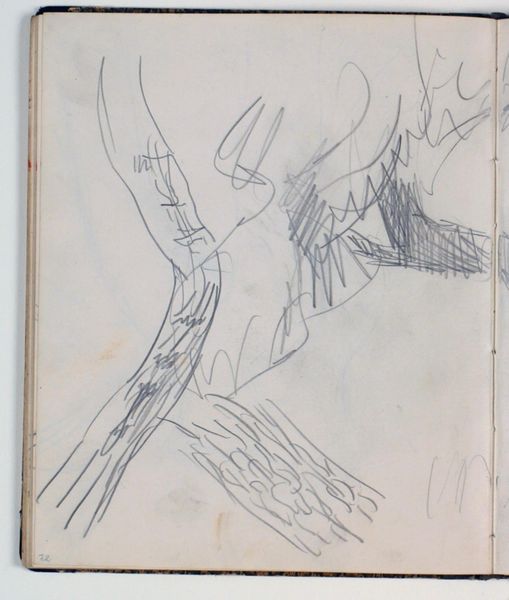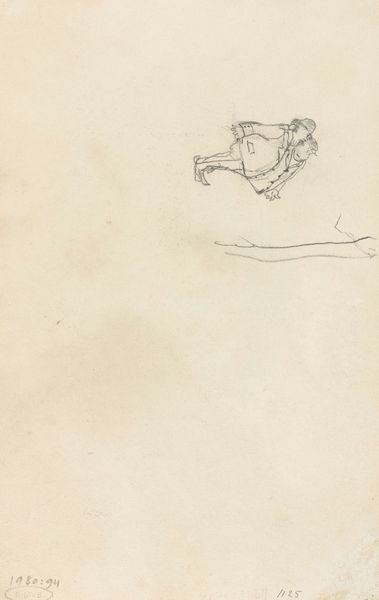
drawing, paper, ink
#
drawing
#
conceptual-art
#
paper
#
ink
#
geometric
#
black-mountain-college
Dimensions: sheet: 48.3 x 66 cm (19 x 26 in.)
Copyright: National Gallery of Art: CC0 1.0
Curator: Look at this ink drawing by John Cage, dating from 1979 to 1982, titled "Drawing for Changes and Disappearances No. 33." It’s on paper. What strikes you? Editor: It's quite minimal and cryptic, isn’t it? Almost like an unfinished map, or perhaps a musical score—fitting, given Cage’s background. There’s a real sense of impermanence; the light lines suggest something fleeting. Curator: Absolutely. Cage was deeply engaged with chance operations and indeterminacy, and this drawing, I think, is a testament to that. Consider the context. Cage challenged traditional notions of authorship and intention. These lines, these numbers…they represent a departure from conventional artistic expression. They reflect his broader project questioning institutional norms surrounding music and the arts. Editor: The geometry and annotations do make me wonder what process generated it. Were the shapes random? Or carefully plotted using a system known only to Cage himself? There are textual markings scattered about, too, numbers mostly. What role does written text serve here? Curator: Much like his music, Cage often employed systems – the I Ching, for instance – to introduce chance into his compositional process. These chance procedures are a challenge to dominant value systems around control, originality, genius – ideas that carry specific weight, particularly given his queer identity and experimental nature, during this historical moment. The drawing process mirrored a performance. It deconstructed authority through decentralizing control over production. Editor: So, a visual manifestation of Cage's ideas around dismantling hierarchies? This piece prompts us to consider authorship not as sole creation but as the result of a system in play. The pale palette certainly amplifies the intellectual distance, discouraging romantic or emotional readings, which is reinforced through the absence of typical narrative elements. Curator: Precisely. And considering the title, "Changes and Disappearances," we see his fascination with transformation. What do you think happens when the shapes meet, and intersect? Do they meld? Change into new shapes, new sounds? Or become lost entirely? The drawing becomes about emergence and entropy both, with the ink existing like evidence of actions across the surface. Editor: It really forces us to confront our assumptions about what constitutes art and challenges the very definition of what a drawing should accomplish. Curator: It invites an opening up and questioning – not just of art, but of the socio-political constructs that define how art, music, life are produced and controlled.
Comments
No comments
Be the first to comment and join the conversation on the ultimate creative platform.
